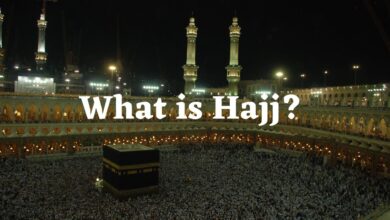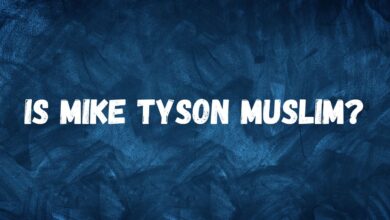Why did Sinead Oconnor Convert to Islam?
Embracing Islam: Sinead O'Connor's Path to Spiritual Fulfillment


Introduction
Sinead O’Connor, an Irish singer-songwriter, is known not only for her powerful and emotive music but also for her deep-seated spirituality. Throughout her life, O’Connor has openly explored various religious and spiritual paths, but her decision to convert to Islam garnered significant attention from fans and media alike. This article aims to shed light on the factors that led Sinead O’Connor to embrace Islam and how her spiritual journey unfolded.
The Quest for Spiritual Fulfillment
Sinead O’Connor’s quest for spiritual fulfillment began early in her life. Raised in a Catholic family, she attended a Catholic school where she was exposed to the teachings and rituals of the faith. However, as she grew older, she found herself questioning some of the traditional beliefs and practices, seeking a more profound and personal connection with spirituality.
In the late 1980s and early 1990s, O’Connor’s career skyrocketed, and her fame brought both accolades and controversies. She used her platform to express her views on various social and political issues, which often led to heated debates and misunderstandings. During this time, she explored various spiritual traditions, including Buddhism and Rastafarianism, but it was her conversion to Islam in 2018 that garnered significant public interest.
The Appeal of Islam
The decision to embrace Islam was rooted in O’Connor’s search for a spiritual path that resonated with her on a deeper level. Islam’s core teachings of monotheism, prayer, and compassion appealed to her sensibilities and aligned with the values she had upheld throughout her life. Additionally, the emphasis on social justice and equality within Islam struck a chord with O’Connor, as she had always been a vocal advocate for human rights.
O’Connor found solace in the simplicity of Islamic rituals, such as daily prayers and fasting during Ramadan, which allowed her to establish a regular spiritual practice. The sense of community and support within the Muslim community also played a vital role in her decision, as she felt welcomed and embraced by fellow Muslims.
Spiritual Healing and Identity
Throughout her career, Sinead O’Connor battled personal demons, including struggles with mental health and emotional turmoil. Her conversion to Islam became a source of spiritual healing and allowed her to find a renewed sense of purpose and peace. By adopting a new identity as a Muslim, she found a way to shed her past troubles and embrace a fresh start.
O’Connor’s choice to don the hijab, the traditional headscarf worn by many Muslim women, was an outward manifestation of her internal transformation. It symbolized her commitment to her new faith and acted as a visible sign of her spiritual journey.
Challenges and Criticism
As with any high-profile religious conversion, Sinead O’Connor faced both support and criticism. Some fans celebrated her newfound spiritual path, praising her courage and authenticity in publicly sharing her beliefs. However, others were less understanding, expressing disappointment or confusion about her choice.
The media’s portrayal of O’Connor’s conversion often centered around sensationalism, further complicating her spiritual journey. Misunderstandings and misrepresentations of Islam added to the challenges she faced. Despite the criticism and misconceptions, O’Connor remained steadfast in her beliefs and continued to advocate for understanding and acceptance.
Conclusion
Sinead O’Connor’s conversion to Islam marked a pivotal moment in her spiritual journey. Driven by a deep desire for spiritual fulfillment and healing, she found solace and purpose in the teachings of Islam. The decision to embrace a new faith and identity allowed her to shed her past troubles and connect with a community that welcomed and supported her.
As with any journey of faith, Sinead O’Connor’s conversion to Islam reflects the complexity of the human experience. It serves as a reminder that spirituality is a deeply personal and evolving aspect of an individual’s life, and it should be approached with empathy and understanding. Through her journey, O’Connor encourages us to seek a deeper connection with ourselves and the world around us, regardless of our chosen paths.
Why did Sinead OConnor convert to Islam?
Sinead O’Connor converted to Islam as part of her ongoing spiritual journey. She sought a deeper connection with her faith and values, and Islam’s teachings of monotheism, prayer, and compassion appealed to her sensibilities. The religion’s emphasis on social justice and equality also played a significant role in her decision.
Was Sinead O’Connor raised in a particular religious faith?
Yes, Sinead O’Connor was raised in a Catholic family and attended a Catholic school. However, as she grew older, she began questioning certain aspects of the faith and sought a more profound and personal connection with spirituality.
Did Sinead O’Connor explore other spiritual pathsbefore embracing Islam?
Yes, throughout her life, Sinead O’Connor explored various spiritual traditions, including Buddhism and Rastafarianism. Her journey of seeking deeper spiritual fulfillment led her to explore different paths before ultimately choosing Islam.
What aspects of Islam appealed to Sinead O’Connor?
Sinead O’Connor was drawn to the simplicity of Islamic rituals, such as daily prayers and fasting during Ramadan. The emphasis on community and support within the Muslim community also appealed to her, as she found a sense of belonging and acceptance.
Did Sinead O’Connor face any challenges or criticism after converting to Islam?
Yes, as with any high-profile religious conversion, Sinead O’Connor faced both support and criticism. Some fans celebrated her decision, praising her authenticity, while others expressed confusion or disappointment. Misunderstandings and misrepresentations of Islam in the media added to the challenges she faced.
How has Sinead O’Connor’s conversion to Islam impacted her music and career?
Sinead O’Connor’s conversion to Islam has influenced her music and public image to some extent. While she remains true to her artistic expression, her spiritual journey has shaped her perspectives on certain issues, leading her to advocate for understanding and acceptance.
Has Sinead O’Connor spoken about her experience as a Muslim?
Yes, Sinead O’Connor has openly shared her experiences as a Muslim, discussing the positive impact it has had on her life. She has emphasized the importance of her spiritual journey and the sense of peace and purpose she has found through Islam.
Does Sinead O’Connor actively engage with the Muslim community?
Yes, Sinead O’Connor actively engages with the Muslim community and has found support and acceptance within it. She participates in Islamic events and activities, embracing the sense of community and fellowship that comes with being a part of the Muslim faith.
How has Sinead O’Connor’s conversion to Islam influenced her advocacy work?
Sinead O’Connor’s conversion to Islam has strengthened her commitment to social justice and human rights advocacy. The values of compassion and equality within Islam align with her beliefs, inspiring her to be a vocal advocate for important causes.
What message does Sinead O’Connor’s journey convey to others?
Sinead O’Connor’s journey of converting to Islam reminds us that spirituality is a deeply personal and evolving aspect of life. It encourages individuals to seek spiritual fulfillment, embrace their chosen paths, and approach different beliefs with empathy and understanding.





